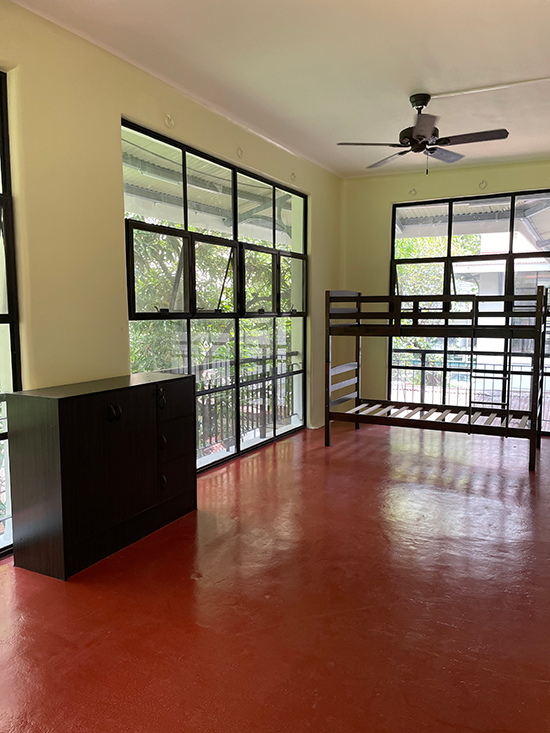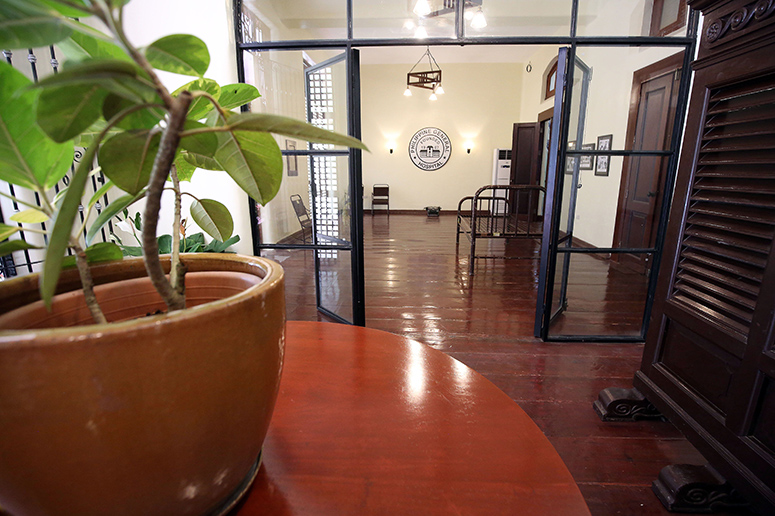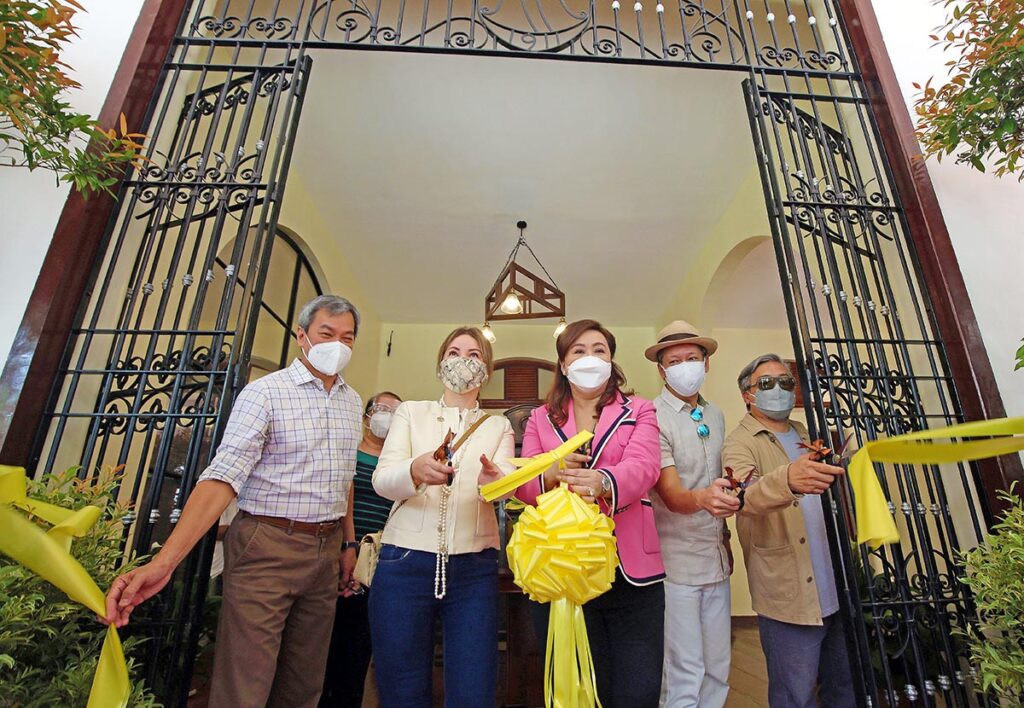When she was a medical resident at the University of the Philippines, Dr. Marge Luna, one of the deputy directors of the Philippine General Hospital (PGH) stayed at the “Old Nurses Dorm” in the 10 hectare-compound of the state hospital.
Luna remembers that the dorm was so decrepit she had to bring up pails of water to the second-floor bathroom every time she took a bath, no matter how tired she was from duty.
But she and many female medical workers had no choice as the three-story dorm, built in 1910 and standing forlornly to the right of the main building (if you were facing it from Taft Avenue), was conveniently located. During the age of pagers and before the time of smartphones, its location made it easier to answer the call of duty.
More than 100 years old
The PGH was built just 11 years after the death of Jose Rizal. It celebrated its centennial in 2007, 100 years since the US government passed a law establishing it. The hospital saw the worst of tropical epidemics during its early existence and the worst of the war in the 1940s. It is one of the very few Philippine hospitals that remained open all throughout World War II. At present, the hospital has a bed capacity of 1,500 and around 4,000 employees.

The PGH has survived the war, but not the ravages of time and the poverty afflicting most of the nation. Now, it also has to survive the ravages of COVID-19.
Three years ago, construction magnate Alice Eduardo asked PGH medical director Dr. Gerardo “Gap” Legaspi, after donating an isolation ward to children afflicted with cancer, how she could further help the hospital.
Legaspi said there was an old building in the compound, historically called the “Old Nurses Dorm,” begging to be useful again.
Based on what he saw daily in the hospital, he wanted it to be restored to a dorm for female medical workers and a home for transient patients from the provinces who had no home while in Manila.
Three years ago, the building looked like it needed to be wheeled into the ICU of restoration. With its windows boarded up, it was gasping for air. With its plumbing system gathering rust instead of water, it was severely dehydrated. Its paint, inside and out, was raw and peeling.

Legaspi commissioned architect Mico Manalo, a commissioner of the National Commission for Culture and the Arts, and restoration expert Andrew De Guzman of Andrew De Guzman Design and Construction, to bring back the Old Nurses Dorm to life.
Into the sunlight
Construction work for the restoration of the building began just before the March 2020 lockdown, and despite the challenges of all the lockdowns that followed, it emerged from the shadows of neglect this September. Subject to the UP Board of Regents’ final approval, it will be christened “Bahay Silungan” — literally, a home to take shelter in.
Designed by architect William Parsons, who was known for his colonial tropical architecture in the Philippines in the early 20th century, the Old Nurses Dorm has been wheeled out of the ICU of disrepair and into the sunlight.
The picture of robust health, it is also a stately beauty. And water now flows through its taps.
“It is harder to restore a historical building than to build one,” said Alice Eduardo, also known as the country’s “Woman of Steel,” when she congratulated Legaspi, architect Manalo, and the construction team of Andrew de Guzman, for the rehabilitation of the building.
Shaded verandas with arches lace the front of the building. French doors with capiz window panes open up to the veranda.
In fact, social media personality Small Laude gasped upon seeing the building: “Is this an extension of The Manila Hotel?”
Indeed, the arched windows, high ceilings, hardwood floors, solid doors, graceful banisters and marble staircases evoke the tropical colonial feel of the Grand Old Lady by the Bay. Its architecture, like that of the hotel, is evocative of a genteel era gone by.
Faithful to the original blueprint
Legaspi dug up plans of the Old Nurses Dorm and both Manalo and De Guzman remained as faithful as they could to the original blueprint — all the way up to the light fixtures.
The nurses used to wheel their beds from their rooms to the verandas on particularly hot nights, Legaspi said.
Parsons was consulting architect to the Philippine government from 1905 to 1914, and designed various structures throughout the country.
According to online sources, “Several public buildings and parks designed by Parsons are a hybrid of colonial architecture and that of the Philippines, which is a tropical country. Such designs also adopted the use of local material, such as hardwoods and capiz shells for window sash in place of glass to reduce sunlight glare.”
One ascends stone steps to the foyer of the building, whose focal point is an original louvered divider of the Old Nurses Dorm, which was retrieved from one of the offices in the main building. One side of the building that opens up to the veranda had become a toilet before the restoration. Manalo and De Guzman have restored the space into a small hall, which Legaspi plans to turn into a conference room.
While in the process of making the space livable again, the restoration team discovered that the walls in this former kubeta were mute witnesses to history.
For beneath the surface, the walls wore several layers of paint, each layer, a page from history. The restorers framed a portion of this wall, so the layers have become both abstract art and storyteller.
The second-floor rooms have retained their old imposing wooden doors, as well as the “vanity doors,” which allow privacy for the room’s occupants even when they open the tall doors to let the air in. The rooms now have floor-to-ceiling windows with a verdant view of trees, perhaps as old as the building itself. And yes, a toilet. Shower rooms are also on each floor.
Stories from the past
De Guzman narrates that when they were restoring the building, they dug up some bones, some guns and some bullets!

Manalo shares why this project was meaningful to him.
“Because everything has a history. It’s also the struggle of the nursing profession in the Philippines. This is the first building in PGH that was dedicated to nursing. And we all know that today, the Philippines has one of the biggest populations of nurses abroad. I think it’s also very important to consider that legacy for future generations, for Filipinos both here and abroad to know that the nursing profession is one of the most noble professions.”
In the time of COVID-19
The Old Nurses Dorm will now be for medical frontliners, not just nurses.
“The need to do this became more apparent during the COVID crisis when we needed to provide shelter for our health care workers serving our patients. That is why we needed to really push for it,” Legaspi told us as he proudly toured us around Bahay Silungan. It wasn’t just history that was being rescued from neglect — it was the very welfare of PGH’s valued health care workers.
The PGH chief and neurosurgeon felt the need “to provide better, more humane accommodations (especially) for our female staff members.” After all, they had to brave the dangers of the dark while heading home past midnight.
The rooms in the dorm were modernized and will be managed by a professional. Originally, the plan was to accommodate 66 female staff members and 24 transient patients but because of the current physical distancing protocols, only half will be safely accommodated at this time.
Healing home
Legaspi says the transient patients’ home will not yet be operational as the COVID-19 crisis rages and there are no out-patients in the hospital as “everything is closed,” but he is confident that Bahay Silungan will truly be a healing home for both overworked medical frontliners and transient patients in the near future.

He says the funding for the Bahay Silungan project was jumpstarted and spearheaded with an eight-figure donation from Alice Eduardo, president and CEO of Sta. Elena Construction and Development Corp.
This was followed by additional support from TikTok Philippines. Donations were all coordinated through the PGH Medical Foundation headed by Dr. Telesforo Gana as part of their joint “Healthcare Worker Shelter Program.”
The restored Old Nurses Dorm, now called Bahay Silungan, not just preserves the best of the past — it encourages the brightest of the future — for medical frontliners and the people they lay down their lives for.
